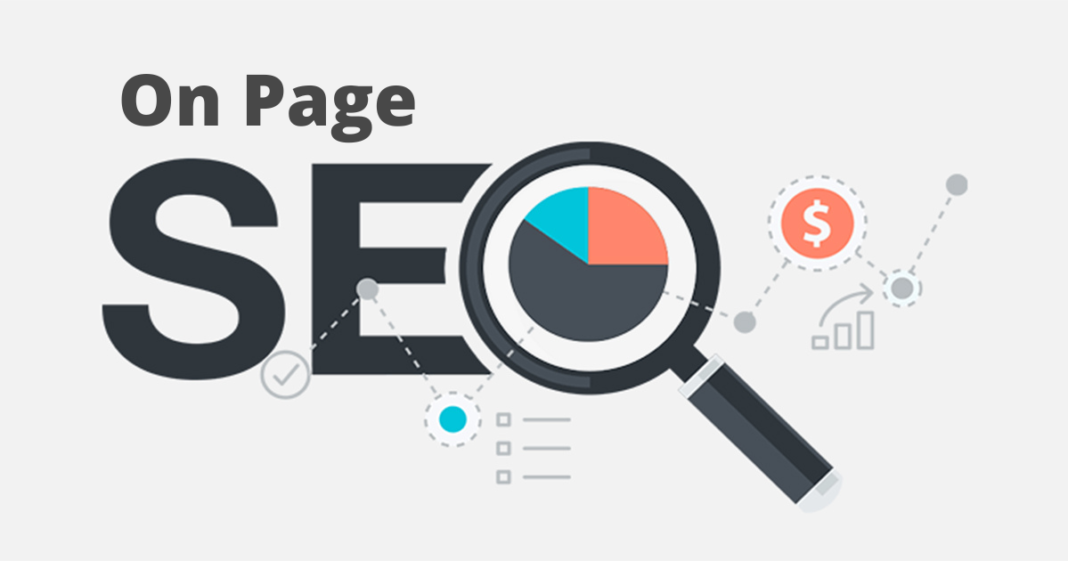Why are there so many firms preoccupied with search engine optimization? Essentially said, if you have a well-thought-out SEO plan from the start, you may effectively acquire free internet traffic from that point on SEO strategy.
Let’s see how to properly configure your website’s “on-page SEO,” because then your total SEO strategy operates at optimal efficiency for the life of your website.
Nowadays that you understand how the targeted audience searches, it’s time to start working with on-page SEO, which is the technique of creating website content that answers searchers’ inquiries. On-page SEO is multidimensional, extending beyond content to include things including schema and Meta tags, which we’ll go over in further detail in the following section on technical optimization. Put on the wordplay caps for the time being – it is indeed time to generate your content
What Exactly Is On-Page SEO?
On-page SEO is the process of optimizing website pages in order to boost a website in the search engine ranks and generate organic traffic.
On-page SEO includes optimizing your headlines, HTML elements (title, Meta description, and header tag), and pictures in addition to posting relevant, high-quality content. It also entails ensuring that your webpage has a high degree of competence, authority, and credibility.
Why On-page SEO is Important
On-page SEO is essential since it assists search engines in understanding your website and its content, as well as determining if it is relevant to a searcher’s query.
As search engines improve, there is a growing emphasis on relevancy and semantics in search engine results pages.
With its variety of complicated algorithms, Google has become much better at:
- Discover what users are looking for when they enter a query.
- Providing search results that are relevant to the user’s query.
Reacting to this change is critical, and one can do that by ensuring that your site as well as its content – both what is accessible to visitors on your websites and aspects available exclusively to search engines – are up to date.
Start with your desired keyword.
While many old-school SEO methods have fallen out of favor, this one is still effective and is recommended by prominent SEO professionals. It’s also the simplest to put into action. Simply include your goal keyword (also known as the primary keyword) in the first 100-140 characters of your blog post or article. So, if “wheat products recipes” is your goal term, include it immediately.
Once you think about it, it makes perfect sense. Wouldn’t you mention grain product recipes in the opening few phrases or paragraphs of your article?
This is another tried-and-true on-page SEO tactic that informs Google just what your page is about.
H1 and H2 tags
If you’re still using a blogging site like WordPress, you’ll realize that your post title is automatically wrapped in an H1 tag. That’s because it’s correct 99.9 percent of the time. Google uses the H1 element to define the composition of your page.
We would not want any needless errors that lead Google to become confused, lowering your ranks. Any subheadings should also be included in H2 tags. According to recent research, content lacking H2 tags fared lower than information with H2 tags.
Finally, include all your keywords in the H1 tag and at least a couple of H2 tags.
Meta descriptions
Meta descriptions have been an important performance element from the initial periods of SEO.
Meta descriptions, which are Meta tags that offer a description of what the website is about, are usually displayed in the SERPs beneath the page title.
While Google claims that Meta descriptions have no effect on rankings, there is circumstantial evidence that indirect features of better descriptions can.
Correct Meta description optimization can assist improves:
- Rate of click-through (CTR).
- Perception of the outcome’s quality.
- Everything about your website’s perception changes.
Make your content stand out.
Being unique does not only imply avoiding copying. Obviously, your blog article must have unique material, or Google will severely punish you. Unique SEO content must go above and above, delivering unique value or insights that rival pages do not.
- A novel and little-known strategy, for example.
- A broader range of resources.
- Improved design and customer experience
- A detailed case study
- A comprehensive handbook or step-by-step procedure.
The samples provided above are excellent beginning points. However, to genuinely differentiate your material, you must include additional value, such as:
- Specifics: Screenshots, video walkthroughs, and foolproof instructions.
- Attractive writing: Content that draws the reader in and delivers the information smoothly.
- Up-to-date online content: A post that has been updated with more current studies or new content.
- Authority: Establish credibility for your material by involving well-known personalities in your area.
By combining these elements, you may improve your SEO results by creating unique information that clearly gives something your market cannot obtain somewhere else.
SEO Writing
SEO writing is creating material that is optimized for both users and search engines.
Writing excellent SEO content requires a plan that goes beyond keyword research and filling in the spaces.
Generating content just for producing it will not suffice. Remember that you’re creating material for people, therefore it must be of good quality, significant, and relevant.
Headlines
Do you want your website’s content to rank well in search engines? Then begin creating catchy headlines.
Coming up with a name for a blog post may appear to be too simple, but a fantastic headline may be the gap between such a click and an impact – which is why they must be created intelligently.
Your headlines must pique users’ attention in order for them to click through them and keep on reading the remainder of the material.
Participation of Users
Improving your website’s on-page SEO is really only half the story.
The other half is ensuring that consumers do not bounce but instead remain to examine your content, interact with it, and return for more.
Keeping interested users is a significant problem in and of itself, but it is entirely feasible. Focus on areas such as site performance, customer experience, and content strategy, among others, to boost user engagement.
Conclusion
On-page SEO is essential if you want your website to appear higher in search results.
Regularly optimizing for on-site characteristics will help you boost your rankings, visitors, and conversions. If you are not aware of this, then you can hire an SEO agency in Bangalore, India.











